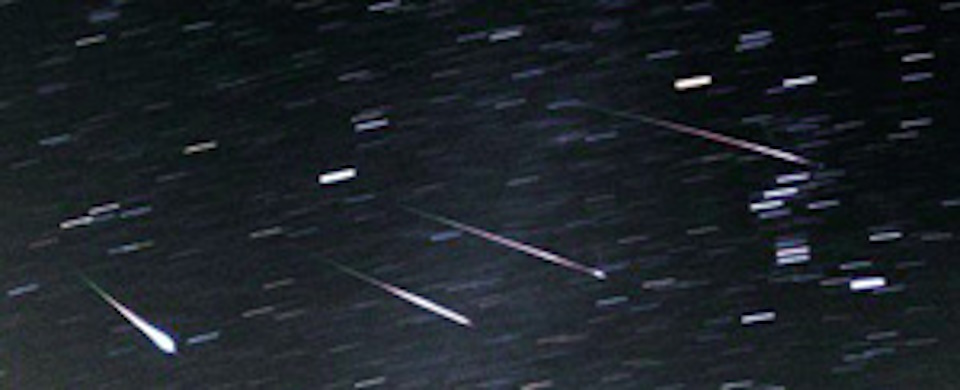Meteors and Comets - Bealtaine

Réalta na Scuaibhe = Star with the Brush, Réalta an eireabaill = Star with a tail, Réalta mhongach = long-haired or maned star.
Rock and ice hurtling through space fascinate our imaginations and inspire myths, legends and predictions. Streaking through the night sky, a flash of light... surely a message from the gods, a sign of some great event.
| Can you tell a comet from a meteor?
| A comet leaves a tail, or sometimes two tails, or sometimes three. A meteor is streaking through our atmosphere and burns up in less than a second. |
There are different kinds of comets: some are regular - periodic, others fly by never to be seen again.
The Meteor Data Centre lists about 600 showers a year. Some better known ones include.....
- Lyrids: 14-30 April - Bright fast meteors associated with Comet Thatcher
- Eta Aquariids: 19 Apr-28 May - Low and swift across the sky with long paths. Associated with Comet Halley
- Perseids: 17 July-24 Aug - Many bright fast meteors with trains. Associated with Comet Swift-Tuttle (1737, 1862, 1992)
- Orionids: 2 Oct-7 Nov - Associated with Comet Halley, are known for their brightness, colours, long tails and speed. They appear to radiate from near the raised 'club' of the constellation Orion. Serbs call all stars cudgels or clubs.
- Draconids: 6-10 October - Associated with Comet 21/P Giacobini-Zimmer
- Taurids: Southern: 10 Sep-20 Nov and Northern: 20 Oct-10 Dec - Very slow meteors
- Leonids: 6-30 November - Fast bright meteors associated with Comet Tempel-Tuttle
- Geminids: 4-20 December - Plenty of bright meteors
- Ursids: 17-26 December - Sparse shower. Associated with comet 8P/Tuttle
- Quadrantids: 28 Dec-12 Jan - Bluish or yellowish-white meteors
Time and Date - Meteor Shower Calendar
Halley's Comet
This famous comet swings by Earth every 75 to 76 years, and as it makes its way around the sun, it leaves behind a trail of comet debris which continues to move along the comet's orbit but a bit slower than the comet itself. Earth's orbit around the sun crosses paths with the debris orbit twice a year: in May, Eta Aquarids meteor shower, and in October and November when we see the Orionids shower.
“You have come to make many mothers cry. You are evil; I hate you! It has been a long time since I saw you. But as I see you, you become even more terrible because I know that you are a symbol of the destruction of my country. “
These were the words of an English pastor, Elmer, in 1066 when a Halley comet appeared in the sky. The Halley comet was thought to look like a flaming sword in the night sky, a traditional symbol of war and death. Superstitions Surround Halley’s Comet by Anas Rehman
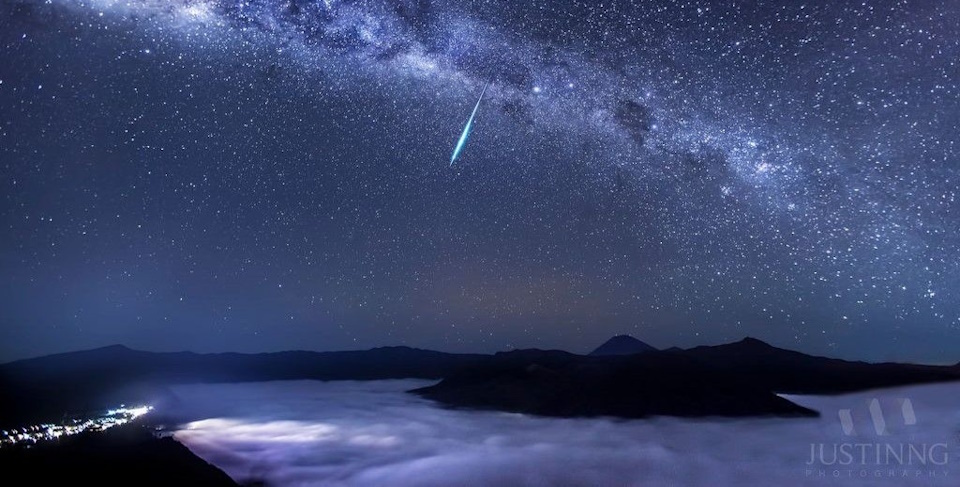
Travelling Soul
In many different cultures, stars represent souls. Therefore, a shooting star means a soul is on a journey. Different cultures assign different spiritual meanings, whether that’s deceased souls departing purgatory for heaven (France, Germany, Poland and the United States), wandering souls looking for the right path (Chile), new souls of a babies (Britain) or the end of life for old souls (Lithuania). How Stuff Works website
In Australian aborignal cultures... When a Yerrunthully person (central Queensland) died, they climbed to the sky on a rope. When they reached the top, they dropped the rope, which was seen as a meteor. If the meteor made a booming noise (exploded), it was the sound of the rope hitting the ground (Palmer, 1884, p. 292). WGN, the Journal of the IMO 38:3 (2010) 87 Meteors in Australian Aboriginal Dreamings by Duane W. Hamacher 1 and Ray P. Norris
In the spring of 44BC, a comet that appeared was interpreted as a sign of the deification of Julius Caesar, following his murder. Caesar’s adopted son Octavian (Augustus) made much of the comet, which burned in the sky during the funerary games held for Caesar.
This portentous event was frequently celebrated in the ancient sources. In his epic poem, the Aeneid, Virgil describes how “a star appeared in the daytime, and Augustus persuaded people to believe it was Caesar”.
Ancient Cultures explain comets and meteors
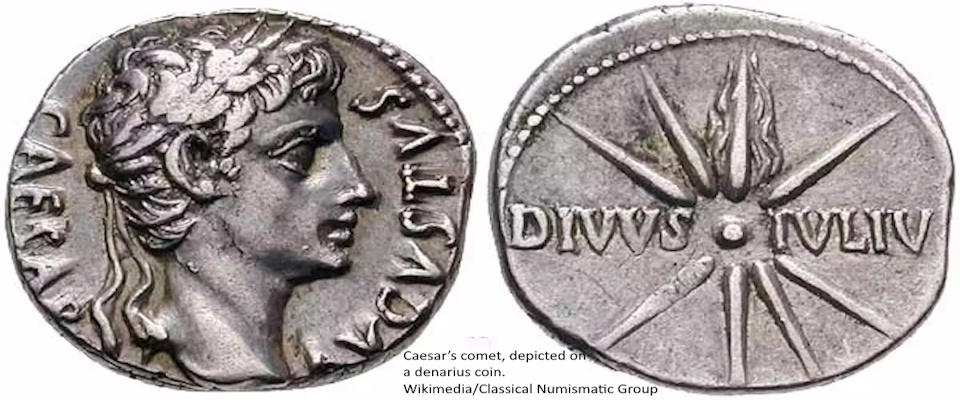
Destiny calls
Good luck or bad luck? Depends on your traditions.
The comet that brought the Normans - Perhaps the most well-known medieval recording of a comet sighting, Halley’s comet appears in the Bayeux Tapestry, which depicts the 1066 comet that foretold the invasion of the Normans. British Academy - 9 Medieval comet sightings

Comets, kings and bad luck seem to go together. In 959 CE, Edgar the Peaceful became king of England. As his name suggests, his reign was relatively peaceful. In 975, the last year of his reign, a comet was seen, which was taken as a sign of a coming famine and his death. Fireballs as a bad sign
“Then
too was seen, high in the heavens, the star on his station, that far
and wide wise men call – lovers of truth and heav'nly lore – ‘cometa’ by
name," one 10th century account reads.
"Widely was spread God's vengeance then throughout the land, and famine scour'd the hills. May heaven's guardian, the glory of angels, avert these ills, and give us bliss again; that bliss to all abundance yields from earth's choice fruits, throughout this happy isle.”
The next year saw a famine blamed on the innocent comet, minding its own business hurling its way through space, as well as some terrible governance."And this year Edward, Edgar's son, succeeded to the kingdom; and then soon, in the same year, during harvest, appeared "cometa" the star; and then came in the following year a very great famine, and very manifold commotions among the English people," the Anglo Saxon Chronicles reads.
Oracle Bones
Some of the earliest comet observations were recorded on Chinese oracle bones. These were pieces of turtle shells and bones used for a form of divination. The Chinese were particularly interested in celestial omens.
Ancient Chinese records of comet observations are the most extensive historical records in existence. They are far more complete than European observations. The earliest confirmed Chinese comet observation is from 613 BC, but there is also a possible sighting of Halley's Comet in 1059 BC. However, this may not be an actual sighting, but the result of later back calculation. Wikipedia - historical comet observations
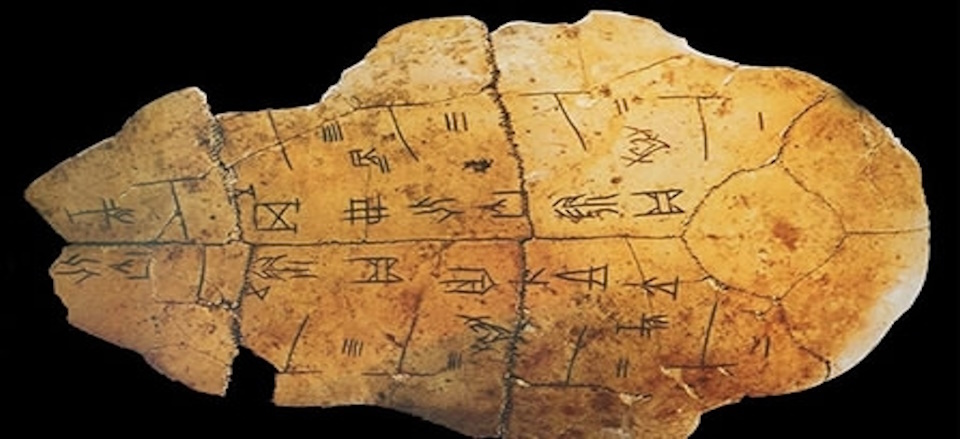
A most remarkable example is provided by the ancient Mawangdui Silk Book, which only came to light in the early 1970s. While excavating three sealed tombs dating back to 168 BC, Chinese archaeologists discovered a copy of a book transcribed onto a swathe of silk about 1 ½ metres long. The book, which originally dates back to the 3rd century BC – with the knowledge it contains possibly dating back centuries more – contained 29 drawings and accompanying descriptions that almost certainly qualify as the world’s first detailed writings on comets based on actual observation. Of the 29 comets recorded, 18 had never been identified before.
| Mawangdui Silk Book, diagrams of comets, circa 3rd Century BC: | 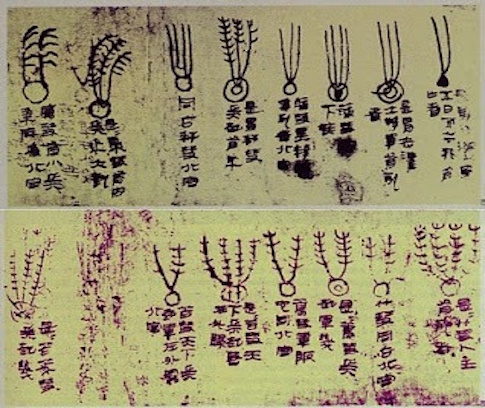 |
Make a Wish
Shooting stars, really just rock and ice burning up high in earth's atmosphere, streak across the night sky. A message from the Gods?
If you get lucky enough to see a shooting star, close your eyes before wishing. This old rhyme is rumoured to make your wish come true.
“Starlight, star bright, first star I see tonight, I wish I may, I wish I might, have this wish I wish tonight.”
| In Chile, if you see a meteor you're supposed to immediately pick up a stone for luck. In the Philippines, if you see a shooting star, for good luck you must tie a knot in a handkerchief before the meteor stops falling. In some Baltic countries and central Europe, people thought that each person had their own personal star which, when they died, died with them and fell from the sky. This is why it was common practice to say something like "rest in peace" or "go with God" if you saw a meteor. exemplore.com Do-Shooting-Stars-Have-the-Power-to-Fulfill-Wishes |
Catch a falling star and put it in your pocket... Never let it fade away
Catch a falling star and put it in your pocket... Save it for a rainy day
For love may come and tap you on the shoulder some star-less night
Just in case you feel you wanna hold her you'll have a pocketful of starlight
Artemis
And when the town clerk had quieted the crowd, he said, “Men of Ephesus, who is there who does not know that the city of the Ephesians is temple keeper of the great Artemis, and of the sacred stone that fell from the sky? Bible - Acts 19:35
The temple of Artemis (Greek) is one of the Seven Wonders of the Ancient World; the "sacred stone" is probably a meteorite that is housed in the temple. It was built entirely of marble. Inside stood the statue of goddess Artemis made of cedar wood. Artemis is often depicted as a fertility goddess, dressed in shades of brown and green, her chariot drawn by four golden horned hinds. She spent much of her time hunting in the forest, thus her symbols included a bow and arrow, a quiver, and hunting knives, and the deer and the cypress. Diana is her Roman equivalent.
A meteorite was a focus of veneration in Delphi (considered the centre of the world) and in other Greek and Roman temples.
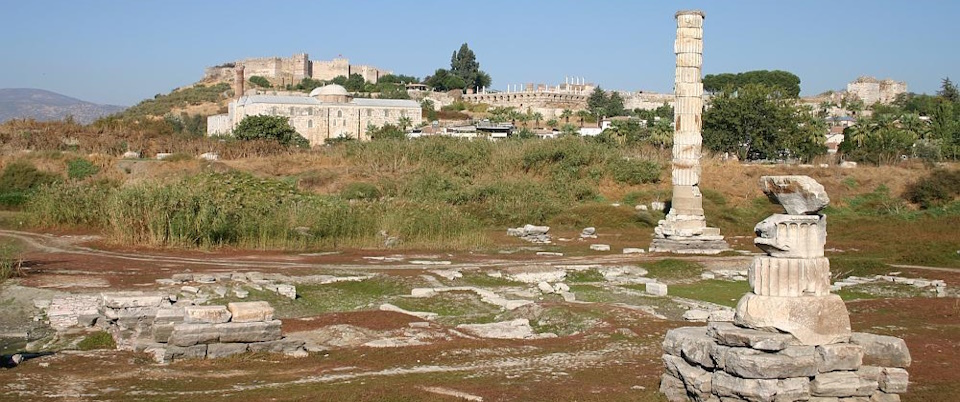

Rock Art
Go to for more information - A Remarkable Comet and Other Astronomical Objects
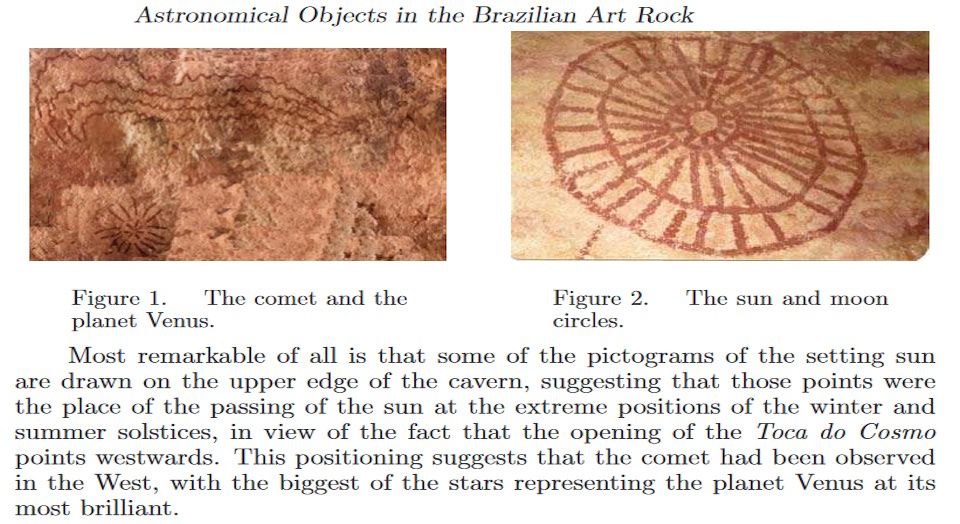

Colours
Have you ever seen a blue or green shooting star? Meteors can have different colors, based on the type of metal they contain. Magnesium gives shooting stars a blue-green light, iron can make them look yellow, sodium adds an orange-yellow light and ionized calcium brings violet. Atmospheric nitrogen and oxygen in the air surrounding the meteor can make them look red. Leonid colours
Sounds
Meteors do not normally cause audible sounds. Hence, they will pass by unnoticed if not seen. But watch out for hissing sounds that have been reported for very bright meteors. These sounds are thought to be due to very low frequency (VLF) radio waves interacting with the local environment.
A sonic boom is sometimes heard for very bright Leonid meteors, called fireballs, that appear near your own observing site high in the sky. If the particle is larger than the mean free path of the air molecules, a high Mach number shock wave forms in front of the meteoroid. Very rarely, this shock wave penetrates deep enough in the atmosphere that it can be heard. It sounds like the sonic boom of an airplane, but as a distant rumble. Leonid sounds

